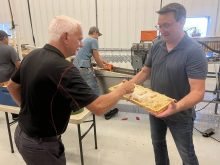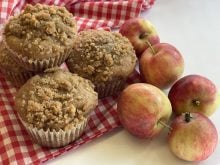The Canadian Home Economics Association administers a respected international development program that encourages a better quality of life in the developing world and understanding in Canada.
CHEA was one of the first professional associations to initiate twinning programs between local and provincial groups in Canada and professional colleagues in developing countries. During the past 20 years, branch and provincial Canadian associations have partnered with home economics associations in developing countries, identifying and carrying out joint development projects. Among the early partnerships formed were Toronto/ Caribbean, Calgary/Sierra Leone, Saskatoon/Ghana and Nova Scotia/Malawi.
Read Also

Vintage power on display at Saskatchewan tractor pull
At the Ag in Motion farm show held earlier this year near Langham, Sask., a vintage tractor pull event drew pretty significant crowds of show goers, who were mostly farmers.
Many Canadian home economists have donated professional experience and some funding, as well as other in-kind contributions, to ensure the creative evolution of this program. The Canadian International Development Agency has assisted by providing block funding.
Development initiatives undertaken in this program promote:
- The role of women to act as development agents and beneficiaries of change.
- Exchange and sharing of ideas.
- Improvement of the socio-economic conditions of poor families.
- Training and development of materials for sharing knowledge with communities in areas such as food and nutrition, family relationships, resource management and housing.
- The enhancement of professional standards and practices.
In addition to the 10 international development projects, resource materials are being developed to teach Canadians about international development issues. The following is a list of some available for teachers and students from the CHEA-International Development Program, 307-151 Slater Street, Ottawa, Ont. K1P 5H3 or fax 613-238-8972.
- Power and Violence in Intimate and Trust Relationships – Open your students’ eyes to the global realities of gender violence and the way to create a world where equity and justice in human relationships are valued by all.
- Work: Children, Women & Men in Families – Helps students understand concepts of work and how quality of life in all countries is influenced by the way it is shared and valued in families and societies.
- Staple Foods & Food Forms: Choices, Changes & Challenges – Explores the origin and use of staple foods and the effects of advertising, transnational corporations, government policies and consumption by the world’s wealthy on the diets and nutrition of poor peoples.
- Diapering – Develops critical awareness of how family decisions about clothing practices affect the global environment.
- Forms of Clothing – Explores ways people have clothed their bodies, historically and culturally, and influences on clothing design, resources and production. Uses simple draping, cutting and sewing techniques.
Cookbook wanted
Dear TEAM: I use a couple of recipes – Vegetable Soup to Freeze and Parsnip Cake – that were included in your Nov. 6, 1997 column. These recipes came out of the the Boomtown’s Fourth Edition of the Women’s Auxiliary of the Western Development Museum Cookbook. Can you please tell me where I can buy this book? – V.A., Baldonnell, B.C.
Dear V.A.: The Women’s Auxiliary of the Western Development Museum put together four editions of the Boomtown’s Cookbook. The fourth edition is the only one available. Call Lydia Harder, president of the auxiliary, at 306-242-7392 or write her at 320 – 5th Ave. N, Suite 113, Saskatoon, Sask., S7K 2P5. The book sells for $3 plus mailing.
Family washday recipe
I have a copy of this cookbook, as well as the third edition. One of the charming additions to these books are the pieces of wisdom and home management instructions for the good cook or new bride. I particularly like the following Grandma’s Recipe For Doing the Family Wash.
“This is an authentic washday recipe in its original spelling as it was written out for a bride four (now five or six) generations ago:
1. Bild a fire in back yard to heet
kettle of rain water.
2. Set tubs so smoke won’t blow in eyes if wind is pert.
3. Shave one hole cake lie soap in bilin water.
4. Sort things, make three piles. 1 pile white, 1 pile cullard, 1 pile work britches and rags.
5. Stur flour in cold water to smooth, then thin down with billing water.
6. Rub dirty spots on board, scrub hard, then bile, rub cullord, but don’t bile – just rench and starch.
7. Take white things out of kettle with broom stick handle, then rench, blew and starch.
8. Spred tee towels on grass.
9. Hang old rags on fence.
10. Pore rench water on flower bed.
11. Scrub porch with hot soapy
water.
12. Turn tubs upside down.
13. Go put on cleen dress – smooth hair with side combs – brew cup of tee – set and rest and rock a spell and count blessings. Mrs. G. Lebsack, Loveland, Colorado. Colony Frank.”
Our automatic washing machines are definitely faster and take less manual labor. I think there is something satisfying in doing the laundry all in one day, conserving and recycling the water used and knowing that the job is done for the week and then “set a spell and count our blessings.”
When was the last time you did that after doing the laundry?
















